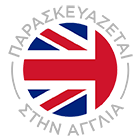Artichoke Leaf
What it is: It is a cabbage of the Asteraceae family. Artichoke is rich in vitamins Α, Β1, Β2, niacin and C. How it works: Artichoke leaves have proven to have a positive effect on the flow of bile and the activity of the bile acids, which are known to facilitate the absorption of coenzyme Q10. At the same time, the digestive system and the digestive process is strengthened..In which products you can find it:
Beetroot Juice & Greens
What it is: Beetroot (beta vulgaris), or beet, is a plant of the Amaranthaceae family. Beetroot can be eaten both raw and cooked, whole (root and greens). Its root is hard when raw, and softer when cooked. Beetroots are rich in carbohydrates, nitrates, magnesium, iron, potassium, sodium, vitamin C and folic acid. How it works: According to research conducted by the University of Exeter, beetroots improve stamina by 16% and their juice helps lower blood pressure. The magnesium they contain helps absorb calcium. Also, beetroots have laxative properties.In which products you can find it:
Burdock Root
What it is: Burdock (arctium lappa) or bear herb. Its name, arctium, comes from the Greek word “άρκτος” (pronounced arctos), that is, bear. It is a native plant in Europe and North Asia, but today it is common in most parts of our planet, where it grows either as weed or as cultivated vegetable. How it works: It is known for its medicinal properties, due to the substances concentrated in the plant root. Burdock root contains a high percentage of fructooligosaccharides (FOS), making it one of the most useful tools to enhance the beneficial enteric bacteria. It has soothing, anti-itch, antibacterial and antiseptic properties. It is suitable for skin protection and is effective against psoriasis and eczema. Its high inulin content promotes the growth of healthy bacteria for the body that can help support the healthy function of the immune and digestive systems; the essential oils it contains offer the skin unique hydration.In which products you can find it:
Coriander Leaf
What it is: Coriandrum sativum, also known as coriander, cilantro, Chinese parsley or dhania, is a plant-herb of the Apiaceae family. Coriander is native to regions extending from South Europe and North Africa to Southwest Asia. Although sometimes only the fruits are edible, the seeds are often used as spice or as an additional ingredient in other foods. How it works: Besides its high content of chlorophyll, vitamins and minerals, research has shown that coriander can enhance the detoxifying effect and the natural capacity of the body to eliminate heavy metals.In which products you can find it:
Dandelion Leaf
What it is: It is a flowering, herbaceous plant, also known as Taraxacum officinale or dandelion. How it works: Dandelion boosts the detoxification mechanisms of the liver, helps detoxicate from environmental pollutants (e.g. CCl4), and has protective action on the liver at large amounts of alcohol. In which products you can find it:
Kale Leaf
What it is: Collard greens, or kale cabbage belongs to the Brassica Oleracea family, where we find broccoli, cauliflower, green vegetables and Brussels sprouts. It is a good source of antioxidants, the most important of which are carotenoids and the rich in sulfur sulforaphane and indole-3-carbinol. Moreover, it contains large quantities of vitamins A, B and K and has the highest vitamin C concentration of all vegetables. How it works: : It is classified by the U.S. Department of Agriculture (U.S.D.A.) as top in content of antioxidant, anti-cancer and phytochemicals. It shields the defense of our body, strengthens the nervous and skeletal systems and improves cell regeneration. Moreover, it relieves from stomach upsets, helps heart function and, due to high content of lutein and zeaxanthin – antioxidants of the family of carotenoids – it contributes to the reduction of the risk of macular degeneration and cataracts.In which products you can find it:
Nettle Leaf
What it is: Nettle belongs to the genus of angiosperm plants Urtica and the Urticaceae family. It is an herbaceous, wild growing plant that grows in Europe, Asia, North Africa and North America. Its scientific name is Urtica dioica. How it works: Nettle is an important source of calcium and magnesium. Moreover, it is rich in fatty acids, amino acids, mineral salts and phosphates, calcium, flavonoids, iron, folic acid, sulfur, potassium, magnesium, manganese, phosphorus, copper, chlorine, sodium, selenium, boron, silica and zinc. It also contains many phytochemicals, such as lycopene, beta-carotene, trace elements, caffeic acid, malic acid, acetic acid and betaine that prevent the formation of free radicals caused by damage to cells and DNA. Today, nettle is used for allergies, hypertension, prostatic hyperplasia and diabetes. It also has diuretic and antirheumatic properties, and also boosts circulation.In which products you can find it:
Parsley Leaf
What it is: It is a species of flowering plant that belongs to the genus Petroselinum, to the Apiaceae family, indigenous in central Mediterranean. Parsley is a source of flavonoids and antioxidants, especially luteolin, apigenin, folic acid and vitamins Κ, C and ΑHow it works: Parsley leaves promote the health of the urinary tract and are rich in flavonoids, especially apigenin, which helps significantly in the health of the prostate. It also relieves from difficult menstruation and is useful for asthma and cough.In which products you can find it:
Turmeric Root
What it is: Turmeric (scientific name: Curcuma longa or goldenseal) is a rhizomatous, herbaceous, perennial plant of Zingiberaceae family, from South Asia.How it works: The most important chemical components of turmeric are a group of compounds called curcuminoids, which include curcumin (diferuloylmethane), demethoxycurcumin and bisdemethoxycurcumin. The natural curcuminoid compounds of turmeric root are one of the most powerful sources in fighting free radicals.In which products you can find it:
Watercress Leaf
What it is: : It has the scientific name Nasturtium officinale. Its origin is from Europe and today it is found in many parts of the earth, close to lakes, streams, rivers and ravines. It is eaten fresh in various salads, and boiled as vegetable in soups, etc. How it works: Watercress contains quite high quantities of the antioxidant carotenoids lutein and zeaxanthin, as well as vitamins (Α, B1, B2, C and Ε) and minerals (iodine, calcium, iron, phosphorus and sulfur). It boosts the defense of the body even more and helps treat respiratory disorders such as common cold and cough. In which products you can find it:
Wheatgrass Juice
What it is: Wheatgrass is a food prepared by the cotyledons of the common wheat plant, Triticum aestivumHow it works: Wheatgrass juice is rich in chlorophyll, which can contribute to good intestine functioning. Moreover, it is rich in carotenoids, vitamins and minerals, as well as in enzymes beneficial for health, such as superoxide dismutase (SOD). It is considered to be one of the most detoxifying foodsIn which products you can find it:













































































































